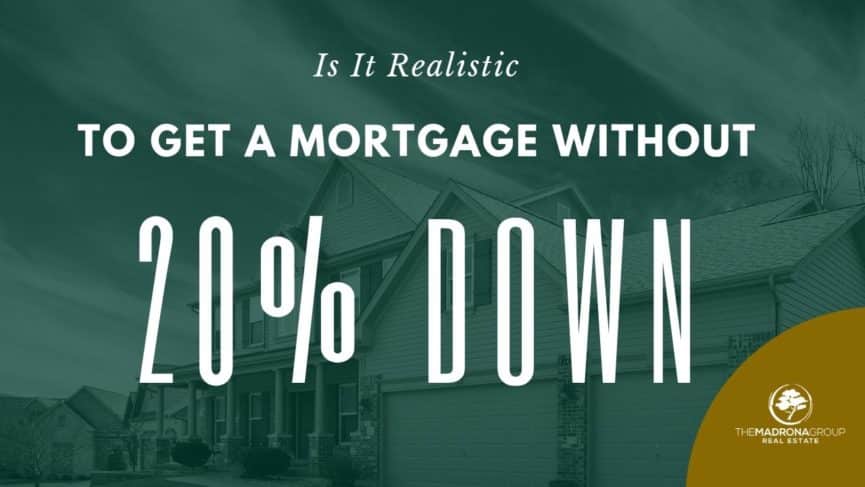Most first-time homebuyers wonder if it is even realistic to get a mortgage without 20% down payment, they assume that they have to — or at least ought to — make a 20% down payment on their home to avoid paying private mortgage insurance (PMI). This can be a hefty sum in any city, but is especially burdensome in Seattle, where housing prices are well above the national average.
44% of homebuyers put less than 20% down, according to an April 2022 confidence index survey.
Fortunately, a 20% down payment isn’t always necessary, or even advisable, to avoid PMI.
While it’s true that making a larger down payment eliminates the need to pay PMI, PMI is nothing to be afraid of. PMI simply protects the lender in the case of foreclosure, and its cost is generally well worth the gains in home equity associated with purchasing sooner and making a smaller down payment.
What’s more, making a large down payment can actually be far riskier than making a more modest investment.
Understanding the negative consequences of waiting to save a 20% down payment requires looking at the numbers, so here are two real-life scenarios, as well as an explanation of additional risks to be aware of and mortgage options that require no or minimal down payments.
Let's look at some scenarios where it is realistic buying a home with low down payment in Seattle.
Scenario 1: Missing Out on Home Equity
Imagine that a King County couple is looking to purchase their first home.
In January of 2024, King County homes had an average sales price of $990,065. This price is high for most first-time homebuyers, so for this example, we’ll imagine that the home’s sales price is $500,000 — still a higher price compared to other U.S. cities, but quite normal for first-time homeowners in King County.
We also need to know the income of the purchasers, so we’ll assume that they have a combined gross income of $11,666 a month, or $140,000 annually.
Part of this amount will go to taxes, so we’ll say that the couple brings home 65% of their gross income, leaving them $7,582 a month to live on. After food, rent, utilities, and other bills, this couple will likely be able to save around $1,500 a month (or $18,000 a year) if they budget carefully.
Now imagine that this couple has $50,000 saved for a down payment (10%), and is deciding whether or not to wait to save $50,000 more to make a 20% down payment and avoid mortgage insurance.
If they decide to wait, it will take them an additional 34 months.
Cons of Waiting to Save a 20% Down Payment
King County real estate has appreciated at an average of 6.71% during the past 59 years.
We will be conservative for our scenario, however, and assume appreciation to be 5%.* When the couple has finally saved the remaining $50,000 after 34 months, the $500,000 home will have appreciated by around $76,000.
This situation has two downsides for the couple:
First, they still do not have enough money saved for the down payment, as 20% of $576,000 is $115,200, not $100,000. And second, had the couple purchased the house 34 months ago, they would have gained $76,000 in home equity by this time, or around $2,235 per month.Proponents of the 20% down payment will point out that the couple was able to avoid paying mortgage insurance, but how beneficial is this?
Their monthly mortgage insurance payment would have been around $79 if they had put only 10% down.
(based on a 30-year fixed mortgage, $450,000 loan amount, and 760 credit score).
Essentially, the couple missed out on $2,235 per month in equity so that they wouldn’t have to pay $79 per month in mortgage insurance.
Scenario 2: Lowering Your Return on Investment
Even if the couple from our scenario above had $100,000 saved when they first found the $500,000 home they wanted to purchase, making a 20% down payment may not have been the best idea.
This is because large down payments often lower a home’s rate of return.
Imagine that the couple purchased the home when it was still $500,000. After a year of appreciating at 5%, the home will be worth $525,000.
No matter how much the couple put down, they will have gained $25,000 in home equity.
The down payment size does affect the couple’s return on investment (ROI), though:
20% down payment ($100,000): 25% return on investment 3% down payment ($15,000): 167% return on investmentThat’s a significant difference.
Of course, we have to take into account that making a lower down payment means paying a higher mortgage rate and private mortgage insurance. If we assume a 1.75% (or 175 basis point) bump from the higher rate and mortgage insurance, we find that the couple pays $8,487.50 more per year to live in their home when they make a 3% down payment.
This may sound like a lot, but their return on investment is still over 100% — and still significantly larger than the ROI associated with making a 20% down payment.
As long as you live in an area where appreciation is expected,* as it is in Seattle, you can assume that the smaller your down payment, the larger your potential rate of return.
Risks of Making a Large Down Payment
The risks associated with making a large down payment don’t stop with missed opportunities to gain home equity.
In fact, the larger the down payment, the larger the investment risk.
Here are a couple additional risks to be aware of.
Lack of Available Liquid Assets
After making a down payment, you can’t easily get that money back.
The down payment you make on your home is immediately converted into home equity — a great asset to have, but an “illiquid asset,” meaning that you can’t access it easily.
(Your only option would be to refinance or sell your home, both of which cost money and take time.)
Spending all of your savings on your down payment could easily leave you “cash poor” and vulnerable in the situation that an emergency requires quick access to cash.
Overexposure to Economic Downturns
An economic downturn could put homeowners who make large down payments at greater risk.
When the U.S. economy declines, so do home prices.
Imagine that two buyers purchase a home worth the same price (one with a 20% down payment and one with a 3% down payment), but after a year those homes have depreciated significantly due to the economy.
While neither homeowner will have gained any home equity, the homeowner who made the larger down payment will have lost significantly more money to the housing market.
Additionally, the homeowner who made a smaller down payment will likely be “underwater” at this point, meaning that they owe more on the home than the home is worth.
This obviously isn’t ideal, but it’s a risk that rests with the bank, not the homeowner.
The bank will be less likely to foreclose on this underwater home because doing so could cause it (the bank) great losses. After all, all the money lost is money that the bank itself lent.
No and Low Down Payment Mortgage Options
Many homeowners neglect to look into mortgage options that require either no down payment or a minimal down payment because they think they won’t qualify.
This is generally not true, as a number of mortgage options are available for those who can’t (or don’t want to) make a 20% down payment, or buying a home with low down payment.
VA LOANS
U.S. military members and their families are eligible to receive 100% financing through the Veterans Affairs (VA) loan, meaning that no down payment is required.
USDA LOANS
Buyers with low to moderate incomes can take advantage of the Rural Development Guaranteed Housing Loan from the U.S. Department of Agriculture (USDA). More commonly known as the USDA loan, this mortgage option provides 100% financing and is available to buyers in both rural and suburban areas.
HOMEREADY™ MORTGAGE
The HomeReady™ mortgage requires only 3% down and is designed for low-income purchasers, minorities, and multigenerational families, although anyone who meets the eligibility requirements can apply.
CONVENTIONAL 97
Buyers who qualify for a conventional loan but can’t or don’t want to make a large down payment can receive 97% financing through the Conventional 97 loan.
PIGGYBACK LOAN
Piggyback loans involve two different loans: one large mortgage and one much smaller mortgage that “piggybacks” on the first loan. Because piggyback loans require a 10% down payment, paying private mortgage insurance isn’t necessary.
FHA LOANS
The Federal Housing Administration (FHA) loan requires a down payment of just 3.5% and has lenient eligibility requirements, making it a popular mortgage option.
CONCLUSION TO Buying a Home with Low Down Payment in Seattle
Every homebuyer’s financial situation is different, meaning that there isn’t a “right” down payment size for everyone.
But before making a decision, every buyer should consider both the potential costs of waiting to buy in an appreciating market and the potential risks of making a large down payment.
Working with a certified mortgage planner, such as Seattle Mortgage Planners, is the best way to make an informed decision that maximizes your future financial security. A trusted mortgage planner can help you review your options and determine the best plan, both in terms of how large of a down payment to make and what mortgage type to go with.
And once you know how much money you have to work with, The Madrona Group will be ready to help you find your dream home.
*Appreciation can fluctuate from year to year and is not guaranteed. For our scenarios, we assume that it will be conservatively positive because of Seattle’s historical positive averages.
Share this post!





2 Comments on “Is Buying a Home with Low Down Payment in Seattle a Reality”
There are few terms from our glossary to help explain what can sometimes occur when using selling your house. I have seen or experienced this myself by working in a company. I want to review it on this blog as well.
Hey Bridge. Let me know if you would like to contribute.